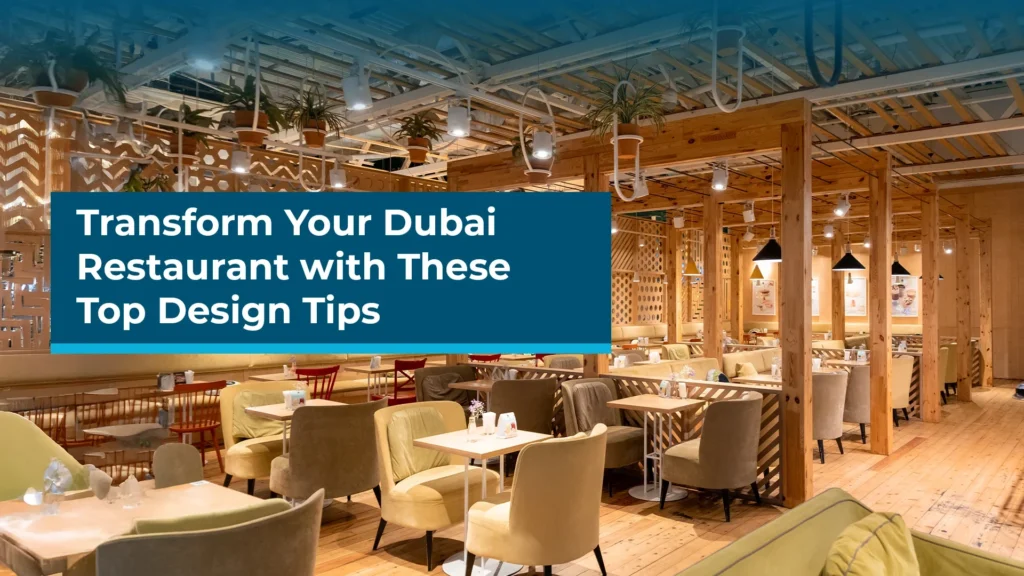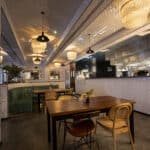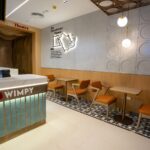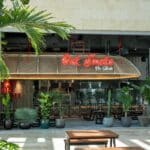Creating the perfect restaurant environment is about more than just appealing decor—it’s about crafting an experience that connects with guests while supporting smooth operations. As the best interior design company in Dubai, Design Core knows that successful restaurant design blends style with functionality to attract and retain customers in this competitive market.
The Role of Psychology in Restaurant Design
Impact of Color Choices
Colors significantly influence diners’ moods and behaviors. Warm tones like reds and oranges stimulate appetite and create energetic, lively atmospheres, making them ideal for fast-food and casual dining spots. Cooler colors like blues and greens provide calming, relaxing vibes suitable for fine dining, where guests are encouraged to savor their meals and linger longer.
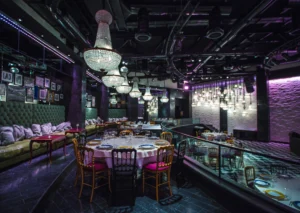
Atmosphere and Mood Influence
The choice of color scheme affects how long guests stay and how they feel during their visit. Bright, vibrant colors promote quick turnover, while richer, darker tones foster intimacy and comfort, encouraging customers to enjoy their time and order more. Using color strategically helps your restaurant reflect its unique identity and customer experience goals.
Layout and Space Optimization for Efficiency
Designing for Smooth Movement
Restaurant Design Tips often emphasize the importance of a well-planned layout. A thoughtfully designed floor plan promotes smooth movement for both guests and staff. Ideally, around 60% of the restaurant space should be allocated to seating, while the remaining 40% should be dedicated to the kitchen, storage, and service areas. This balance enhances operational efficiency while maximizing seating capacity.
Recommended Space Metrics
To ensure comfort, allow about 18 to 20 square feet per diner, with at least 18 inches between chairs. Clear aisles and pathways facilitate staff movement, speeding up service without disturbing diners. A well-planned layout minimizes congestion and enhances the overall dining experience.
Creating Functional Zones
Creating distinct zones within your restaurant like dedicated dining spaces, a bar area, service stations, and waiting lounges can greatly improve the overall experience. Among the most effective restaurant design tips is strategic zoning, which enhances staff workflow while offering guests comfortable, purpose-driven areas to enjoy their visit. This thoughtful layout helps elevate both functionality and ambiance.
Making Small Spaces Work
For restaurants with limited space, clever design is essential. Vertical storage solutions, multi-functional furniture, and light color palettes can create a spacious feel even in small areas. Incorporating built-in seating and foldable tables can also increase flexibility and capacity without overcrowding.
Lighting and Ambiance: Setting the Tone
Layered Lighting Approach
Successful restaurant lighting uses layers—including ambient, task, accent, and decorative fixtures—to create depth and warmth. Ambient lighting sets overall brightness with warm tones, task lighting focuses on dining areas, and accent lighting highlights artwork or architectural features to elevate the space.
Best Practices for Lighting
Dimmable lighting offers versatility, adjusting the mood from lively daytime dining to cozy evenings. Position pendant lights about 30 to 36 inches above tables to illuminate dishes properly without glare. Outdoor seating areas benefit from soft string lights or lanterns that add charm and intimacy during evening hours.
Enhancing Visual Appeal
Lighting shapes how customers experience the ambiance and influences how they view the food. Tables should be brighter than the seating areas, making dishes look more appealing. Using warmer light temperatures enhances food colors and makes the environment inviting.
Trends and Cultural Considerations in Dubai
Eco-Friendly Design
Sustainability has become a top priority for diners and designers alike. Using sustainable elements like reclaimed wood, recycled finishes, and LED lighting helps minimize environmental impact. Adding indoor plants not only improves air quality but also introduces a natural, calming element that resonates with modern diners.
Mixing Tradition with Modernity
Dubai’s rich cultural heritage calls for restaurant designs that blend traditional Arabic elements with contemporary aesthetics. Integrating decorative mashrabiya screens, Islamic geometric patterns, and desert-inspired color palettes can create authentic yet modern interiors that appeal to both locals and tourists.
Technology Integration
Technology enhances both customer experience and restaurant efficiency. Smart lighting controls, digital menus, and contactless ordering systems streamline operations. Flexible interior elements like modular furniture and movable dividers allow spaces to adapt for different functions or events throughout the day.
Let’s Elevate Your Restaurant Together
Designing a restaurant that captivates diners while supporting flawless operations requires expert knowledge and creativity. As Dubai’s leading interior design specialists, Design Core offers over 7 years of experience in delivering stunning, functional restaurant interiors that boost customer satisfaction and business success.
Don’t settle for less when it comes to your restaurant’s design. Whether you’re opening a new venue or revamping an existing one, trust the best interior design company in Dubai to bring your vision to life with precision and style.
Connect with Design Core today for a personalized consultation.
Let us help transform your restaurant into a stunning space that delights guests and stands out from the competition. Reach out today for a free consultation and discover how we turn spaces into experiences.

